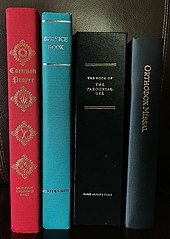 The Western Rite within the Antiochian Orthodox Church is a remarkable testament to the diversity and adaptability of Orthodox Christianity. While the majority of Orthodox Christians worldwide follow the Eastern Rite, the Western Rite represents a unique expression of Orthodoxy rooted in Western Christian traditions.
The Western Rite within the Antiochian Orthodox Church is a remarkable testament to the diversity and adaptability of Orthodox Christianity. While the majority of Orthodox Christians worldwide follow the Eastern Rite, the Western Rite represents a unique expression of Orthodoxy rooted in Western Christian traditions.
A Journey Through Time
To understand the Western Rite's presence in the Antiochian Orthodox Church, we must travel back in time to the early centuries of Christianity. Antioch, one of the most ancient Christian centers, played a pivotal role in the formation of Christian theology and liturgy. Over time, as the Christian faith spread both East and West, variations in liturgical practices naturally developed.
The Schism of 1054 between the Eastern Orthodox Church and the Roman Catholic Church marked a significant divide in Christendom. While the Eastern Orthodox Church continued its liturgical traditions, the Western Church underwent various liturgical reforms and transformations. This schism resulted in distinct liturgical practices, with the Western Church adopting the Roman Rite, while the Eastern Orthodox Church preserved its own liturgical heritage.
Rediscovery and Reconciliation
The history of the Western Rite in the Antiochian Orthodox Church involves a process of rediscovery and reconciliation. In the late 19th and early 20th centuries, some Western Christians, disenchanted with the developments in their own churches, sought a return to more ancient liturgical practices. These individuals, often clergy and laity, were drawn to the rich traditions of the Eastern Orthodox Church.
In their pursuit of a return to Orthodoxy, these Western Christians found a welcoming home within the Antiochian Orthodox Church. The leaders of the Antiochian Archdiocese recognized the value of preserving Western Christian heritage within the Orthodox fold. Consequently, they allowed for the establishment of Western Rite parishes and communities.
Distinctive Characteristics
The Western Rite in the Antiochian Orthodox Church retains certain distinctive characteristics that set it apart from the Eastern Rite. These characteristics include the use of Western liturgical languages such as Latin and Old English, as well as variations in liturgical vestments and music.
However, it is essential to note that the core theological beliefs and sacramental life remain consistent with Eastern Orthodoxy. The Western Rite faithfully adheres to Orthodox doctrine and maintains the same seven sacraments, including the Eucharist, Baptism, and Holy Orders.
Benefits of the Western Rite
The Western Rite offers several benefits within the Antiochian Orthodox Church:
-
Cultural Relevance: The Western Rite provides a familiar liturgical environment for Western Christians who convert to Orthodoxy, making it easier for them to connect with the ancient faith.
-
Evangelical Outreach: It serves as a bridge for reaching out to non-Orthodox Christians, offering a point of entry into the rich spiritual tradition of Orthodoxy.
-
Preservation of Western Heritage: The Western Rite helps preserve Western Christian liturgical heritage, ensuring that these traditions are not lost to history.
-
Liturgical Diversity: It enriches the tapestry of Orthodox worship by adding diversity and variety to the liturgical landscape.
Conclusion
The Western Rite in the Antiochian Orthodox Church is a testament to the inclusivity and adaptability of the Orthodox faith. It bridges the gap between East and West, welcoming Western Christians into the ancient Orthodox tradition while preserving their own cultural and liturgical heritage. As the Antiochian Orthodox Church continues to grow and evolve, the Western Rite remains a vital and cherished part of its history and identity.